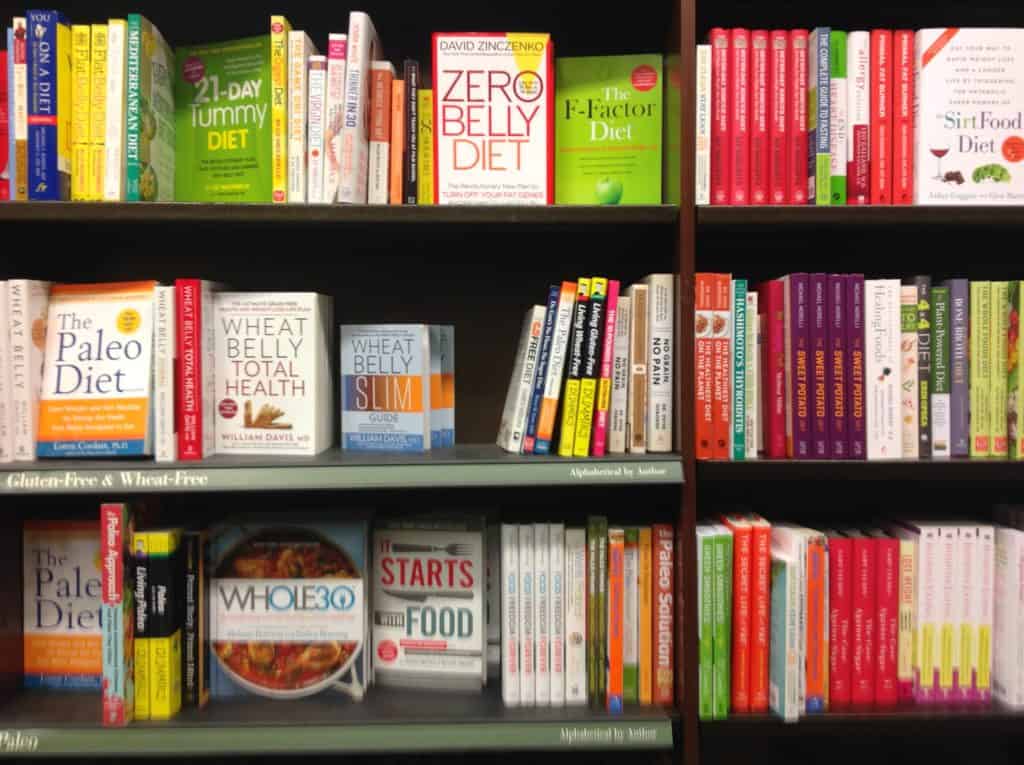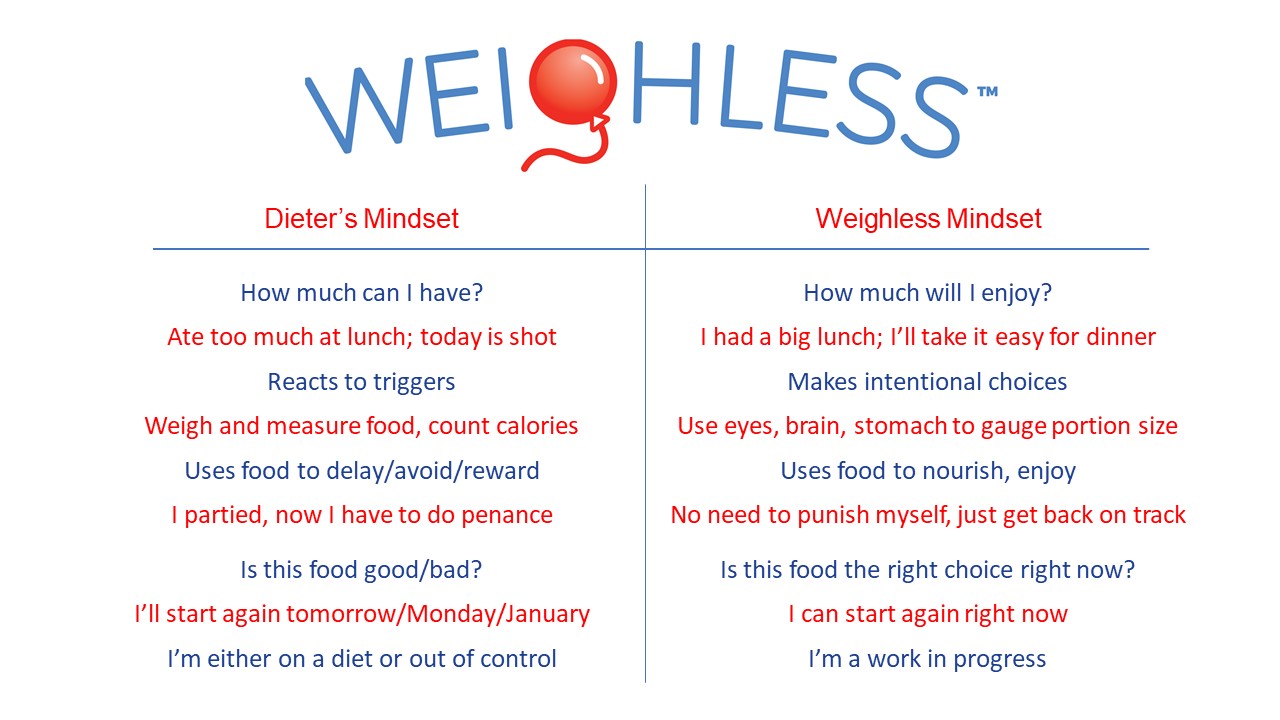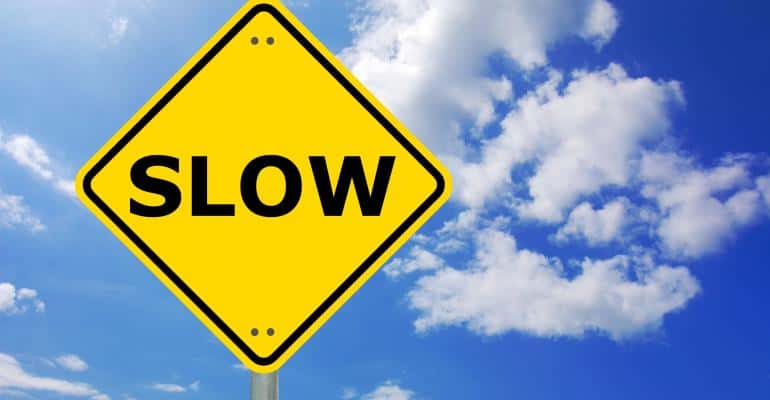 One our members recently shared a Weighless victory…followed by a stumble that many of us know all too well. Do you recognize this pattern?
One our members recently shared a Weighless victory…followed by a stumble that many of us know all too well. Do you recognize this pattern?
“I just got back from a trip to New Orleans. The last time we went it was a disaster of gluttony and excess. I gained weight, and also felt horrible. This time, I vowed, would be different. I posted notes saying QUALITY NOT QUANTITY all over my house for the week before we left. On the trip, I ate everything I wanted to but small amounts of the less healthy stuff and I felt fantastic when we got back. Even better, I weighed the same when we got home as when I left. I was feeling very proud of myself!
“But then totally fell apart after I got home: Bad choices, constant snacking. This is not the first time this has happened. I successfully navigate through a challenging time and then completely fall apart when it’s over. Why do I do this?”
Can you relate? I know I can!
Last year, for example, I spent a month producing two podcasts a week instead of my usual one. It was an intense push. But I was really motivated. I really wanted to create a bit of a buffer for myself so that if something came up (a professional opportunity, a family emergency, whatever) I would have more flexibility.
And I succeeded in getting myself four weeks ahead! But then, over the course of the next three months, I proceeded to blow my lead. A week would somehow slip by without me recording a new podcast. Not because something important came up. Simply because my vision (and therefore my plan) for success only extended to getting ahead. It didn’t include staying ahead.
Don’t blow your lead
As any gymnast or ice skater will tell you, training for (and visualizing) the jump always includes training for the landing.
I had a solid plan for how I was going to research, write, and record two podcasts a week. I scheduled work sessions into my calendar and I stuck to them. Triple Salchow! The problem was that I failed to make any schedule for the weeks that followed. As a result, I failed to stick the landing.
So let’s say you set an intention to get through the holidays or a vacation without gaining weight. (In the Weighless Program, we teach specific strategies for enjoying special occasions or getting through crunch times at work without sacrificing your progress.) You put together your plan. You execute it like a champ.
You’ve done the Triple Salchow. Now all you need to do is stick the landing.
If you see the last day of your vacation or a holiday season or crossing the finish line of that race as the end of your “challenge,” it’s easy for things to fall apart in the aftermath.
Instead, as you plan to navigate the challenge, include the week after the trip or event in that vision. Have a couple of healthy meals in the freezer so that you have good options available when you get back. Get out your calendar and schedule in some exercise for the week after you get home. Make sure you get back into the rhythm of your regular healthy habits. Stick that landing!
What challenges or goals are you planning for right now? What’s the plan for sticking the landing?

 As I turned into the parking lot of my local grocery store, I could see that competition for parking spots was intense. A snowstorm was in the forecast, after all. And there was a football game that afternoon.
Cars were jockeying for position with their blinkers on, waiting for other shoppers to load their groceries and pull out. Others were circling like sharks, hoping to spot and claim an about-to-be-vacated spot before others could react. I could almost see the cloud of stress and frustration rising over the lot and rolling toward me.
With a feeling of relief, I banked to the right, headed to the furthest corner and pulled into one of dozens of empty spots. I collected my empty grocery bags, locked the car door, and because I happened to be wearing tennis shoes, jogged the 200 yards to the door of the grocery store.
As I turned into the parking lot of my local grocery store, I could see that competition for parking spots was intense. A snowstorm was in the forecast, after all. And there was a football game that afternoon.
Cars were jockeying for position with their blinkers on, waiting for other shoppers to load their groceries and pull out. Others were circling like sharks, hoping to spot and claim an about-to-be-vacated spot before others could react. I could almost see the cloud of stress and frustration rising over the lot and rolling toward me.
With a feeling of relief, I banked to the right, headed to the furthest corner and pulled into one of dozens of empty spots. I collected my empty grocery bags, locked the car door, and because I happened to be wearing tennis shoes, jogged the 200 yards to the door of the grocery store.
 Most diets pay way too much attention to what you eat and not enough to why and how you are eating it. You get detailed instructions about exactly what to eat and what not to eat. And if you follow the instructions, you will almost certainly lose weight.
Most diets pay way too much attention to what you eat and not enough to why and how you are eating it. You get detailed instructions about exactly what to eat and what not to eat. And if you follow the instructions, you will almost certainly lose weight.

